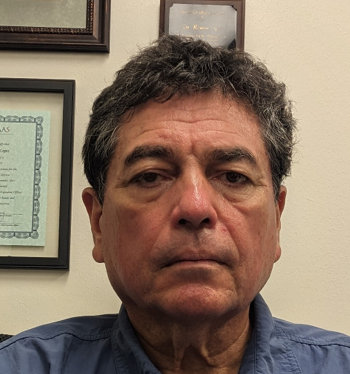Ramon E. Lopez, Distinguished Professor of Physics, The University of Texas at Arlington
 Translating the latest science into education is always a challenge, particularly in physics. A key aspect of exemplary science education is that the students are doing science, not just reading or hearing about science. Physics ideas are often complex and far removed from everyday experience, making it difficult to turn developments in physics into instructional materials appropriate for the classroom. It takes a team of people with deep scientific and pedagogical content knowledge to develop such materials, and classroom testing with students to determine if the instructional materials are effective and practical.
Translating the latest science into education is always a challenge, particularly in physics. A key aspect of exemplary science education is that the students are doing science, not just reading or hearing about science. Physics ideas are often complex and far removed from everyday experience, making it difficult to turn developments in physics into instructional materials appropriate for the classroom. It takes a team of people with deep scientific and pedagogical content knowledge to develop such materials, and classroom testing with students to determine if the instructional materials are effective and practical.
One of the most important advancements over the past hundred years has been the development of quantum mechanics. It is difficult to overstate the impact that this has had on human technology and civilization. All of our modern electronics, our understanding of how stars work, and lasers with their myriad applications are just some of the things that depend on our knowledge of quantum mechanics. Moreover, we are in the midst of another quantum-based technological revolution, with quantum cryptography and quantum computing leading the way. As Yogi Berra put it, “The future ain’t what it used to be.”
Students in their futures lives and careers are likely to encounter quantum-based technologies. The question that we should ask is whether they will be prepared to be successful in this brave new world. The Next Generation Science Standards (NGSS) included some limited quantum topics in the broader framework of modern digital technology, but the NGSS were released more than a decade ago. Google Scholar lists 2,740 articles on quantum cryptography security in 2013, but 15,400 articles in 2023. As one expects, science education always plays catch up to science, so the NGSS, for all of its positive aspects, is weak in this area.
Rather than seeing this as a problem, we should consider it an opportunity for the physics and science education communities to define what students should know about quantum physics and how to incorporate it into the classroom in a way that supports, not replaces, current instruction. It is an opportunity to conduct research in science education around what is effective instruction for this particular content, as well as what constitutes effective professional development for teachers who themselves are likely to be unfamiliar with quantum concepts. While there are general strategies for exemplary science education (like the use of active learning pedagogy), the devil is always in the details. And there are plenty of details that need to be worked out so that students will be prepared for that future that ain’t what it used to be.